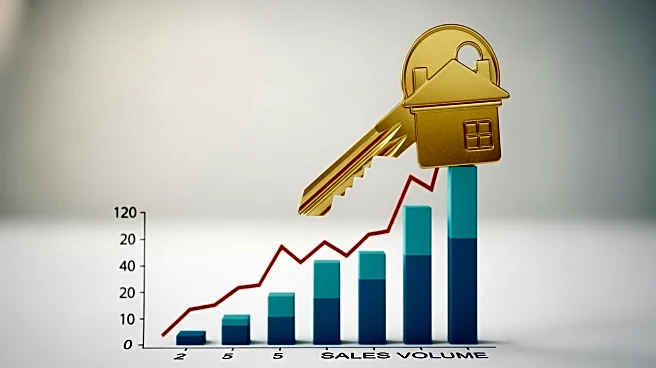What's Happening?
In Collier County, Florida, the median home sales price in August was reported at $588,000, marking a 1.2% decrease from July's median of $595,000. Compared to August 2024, the median price showed a slight
increase from $585,000. Single-family homes in the county saw a 7.1% rise in median selling price to $712,500 from $665,000 in July, and a 2.9% increase from August 2024. The sales price of condominiums and townhomes decreased by 7.2% to a median of $400,000 from $431,000 in July, and a 10.1% drop from August 2024. Across Florida, the median sales price of single-family homes remained stable at $400,000, while the median price for condominiums and townhomes was $285,000, unchanged from July but down 8.1% from August 2024.
Why It's Important?
The fluctuations in home prices in Collier County reflect broader trends in the Florida real estate market, which can impact economic conditions and housing affordability. The slight decline in home prices may offer some relief to potential buyers facing high housing costs. However, the increase in single-family home prices suggests ongoing demand and potential challenges for affordability. The statewide stability in single-family home prices and the decrease in condominium and townhome prices indicate varied market dynamics that could influence investment decisions and housing policies.
What's Next?
As the real estate market continues to adjust, stakeholders such as real estate agents, investors, and policymakers will likely monitor these trends closely. Potential buyers may find opportunities in the declining prices of condominiums and townhomes, while sellers might need to adjust expectations in response to market conditions. The ongoing analysis of housing data will be crucial for understanding future shifts and making informed decisions.
Beyond the Headlines
The changes in home prices could have long-term implications for the local economy and demographic trends. As housing affordability remains a critical issue, shifts in prices may influence migration patterns, local business growth, and community development. The real estate market's response to these changes could also affect broader economic indicators and policy decisions.











